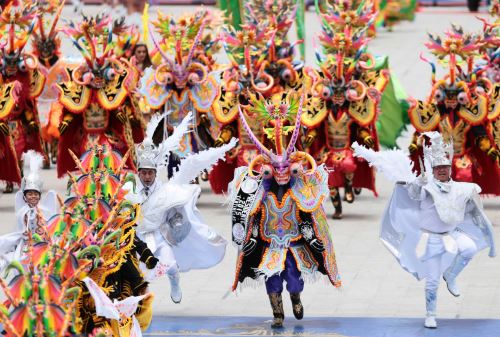12:11 | Puno (Puno region), Feb. 1.
Known as the Capital of Peruvian Folklore, Puno honors such distinction with more than 350 dances that combine ancient traditions and miscegenation reflected in dance, music, and art expressions that cross boundaries within and outside the country.
La Diablada

La Pandilla
Another dance expression with
popular roots is La Pandilla, which unlike other Peruvian dances with the same name, is performed slowly, expressing gentlemanliness and women's elegance.
Sikuri
Sikuri is the authentic expression of Puno locals. The siku, or shepherd's pipes, is an Andean "pentaphonic" instrument —consisting of sound tubes of different length and diameter— that creates a musical symbiosis when played with the bass drum. Dancers move forward and backward performing circular movements.
Tundique
This dance alludes the black slaves during the colonial times and their release during the first years of the Republic. Its performance features black dancers, slaves, a lawyer, and a foreman.
Last but not least are Papa Tarpuy, Tita Titas, Llamayuris, Mallku Condoriri, Kajchas, Chakalladas, Tucumanos, Chusqui-Chuspi, K'aqcha, Qhapu, and Casarasiri, among others.
Published: 2/1/2018